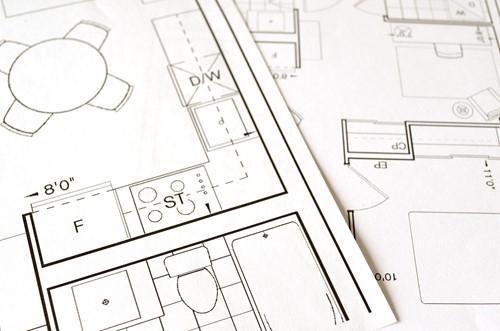
It may come as something of a surprise to prospective home buyers and contractors, but the open floor plan was popularized as far back as the 1950s. The open floor plan boom took off during the 1990s, and that’s when it evolved into a new construction norm.
By its very nature, the open floor plan reduces many of the accessibility impediments found in traditional homes that emphasize separated rooms and sometimes narrow doorways. In terms of new construction homes improving accessibility for people who use wheelchairs, walkers or have growing physical limitations, these are ways open floor plans can be modified to increase accessibility and quality of life further.
What Constitutes an Accessible Floor Plan?
It’s essential to understand the open floor plan through a lens of accessibility. Although new construction homes are typically exempt from Americans with Disabilities Act (ADA) regulations, elements that improve accessibility also tend to enhance the enjoyment of living spaces. Layouts that merge rooms eliminate things like door thresholds and tight spaces, among others. These are three popular open floor plans that increase accessibility in this fashion.
- Kitchen Merged with Dining Room
- Dining Room Merged with Living Room
- Kitchen, Dining & Living Room All Merged
Merging rooms in a new home design only increases accessibility. Given that new residential property owners want higher resale values and better quality of life experiences, these layouts make sense.
How Can Open Floor Plan Modifications Improve Living Spaces?
The basic open layout can be a jumping-off point for more robust accessibility. Many are designed with little consideration given to the physical limitations of our valued community members. By rethinking living spaces in terms of accessible use, simple changes can be integrated that deliver substantial benefits.
- More Large Doorways: Front door entryways are typically the largest in a new home. This tendency makes that entrance point the most logical for accessible ingress and egress. But this design element also tends to limit how people with physical challenges use the living space. For example, larger doorways out to backyard decks, patios and verandas make fresh air more readily available.
- Hardscapes: Too many people with physical limitations require assistance to enjoy outdoor dining areas and leisure spaces. Hardscapes that include flagstone walkways with concrete between the flat stones and other materials can create a pathway from non-threshold doorways to any point in the landscape. Open floor plans are not necessarily reserved for interior layouts.
- Lower Countertops: Both interior and exterior kitchen and dining areas can benefit from lower countertops or accessible tables. These spaces need only meet the ADA guidelines. They also double for convenient meal preparation counters when not needed by a loved one.
- Storage Space Modifications: When home buyers work with contractors to create open floor plan homes, the next logical step may involve walk-in closets. Wide doors without threshold lips make these storage areas perfect for people with specific accessibility needs. An extension of open floor plan spaciousness, walk-in closets and storage rooms generally increase values.
Open floor plans still rank among the most popular new construction layouts used today. They are inherently accessible due to the elimination of walls and doors found in other designs. With a few cost-effective modifications, an open floor plan home has the potential to become fully accessible.
About the Author

Sandy Malbrue
Hi, I'm Sandy Malbrue and I'd love to assist you. Whether you're in the research phase at the beginning of your real estate search for representation or you know exactly what you're looking for, you'll benefit from having a real estate professional by your side. I'd be honored to put my 21 years real estate experience to work for you. Be it to gain wide exposure for your home with my marketing plan, negotiate offers or manage the transaction once you've accepted an offer, in a way that will get you the best price and cause the least amount of disruption to you life as possible.
If you are a buyer, allow me put those skills to work for you to help with the pre-approval process, work with you to locate and arrange for you to view homes of interest to you , and negotiate your offer. Once you have an accepted offer, I will help you arrange inspections, I will manage the transaction for you, from helping to arrange for inspections to keeping you up to date on contingency removals and walking you through the process to a new set of keys.
Let's do this!